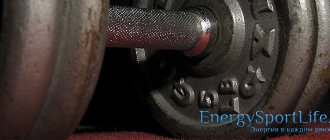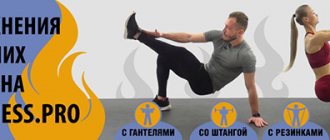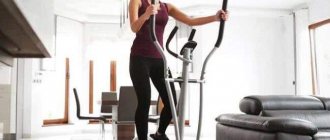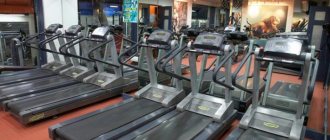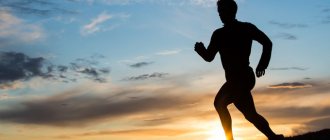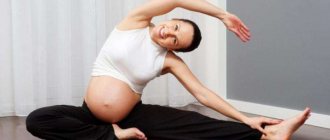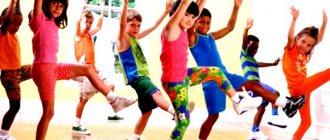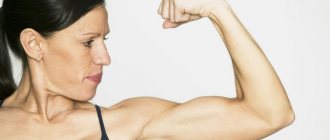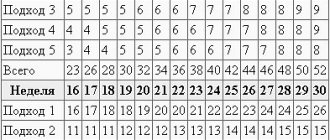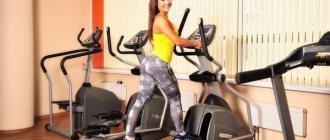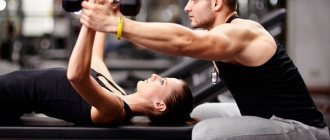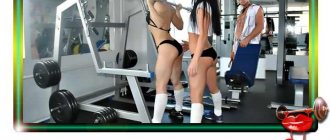Physical activity is the key to health and longevity. Sports are needed not only to avoid gaining weight and to tighten your figure. It has a positive effect on all life processes in the body: supports ability to work, improves brain, lung and digestion function. And if you don’t exercise at all, then eight unpleasant things will happen to your body.
Want more sweets
People who do not exercise are more likely to indulge in junk food: fast food, chocolate, baked goods, etc. The fact is that such food does not contain the nutrients that athletes need. The body of an active person spends useful substances and therefore needs to be replenished. Accordingly, the athlete does not want junk food, but vegetables, protein products and cereals. A physically inactive person does not feel the body’s requests for healthy nutrition, so he is drawn to junk food.
Is sport a grave?
At the beginning of the 19th century, there was a serious theory: since the ideal figure is a ball, then the body should be as round in shape as possible. Therefore, you need to eat more and move less.
In the 21st century, the health benefits of restricting movements were substantiated by the famous Moscow professor Anatoly Sitel. A chiropractor by profession, he came to the conclusion that the spines of modern city dwellers, weakened by low mobility, are contraindicated for the loads that tennis, sports dancing, training on exercise machines and many other types of physical activity require of them. Twisting movements, present in tennis, wrestling, and boxing, are especially dangerous.
Overload in weightlifting is extremely dangerous. Anatoly Sitel claims: for the beauty of the figure achieved through fitness, one has to pay for problems with health. A striking example of this is the problems of Sharon Stone, who became much prettier after hitting the gym, but then began to have serious health problems.
Professor Sitel does not at all suggest sitting in a chair and not getting out of it around the clock. From his point of view, physical activity should be scientifically based and individualized for each person. For example, if you have a problem lumbar spine, “pumping up” your abs by lifting straight legs is harmful. But you can do just fine with this exercise: lying on your back, inhale and exhale with a five-kilogram load on your stomach. The effect is the same and even better, but there is no harm to the spine.
By the way, Anatoly Sitel has a particularly sharp tooth for school physical education. In his opinion, the methods of physical education of schoolchildren developed almost in the 30s of the last century are hopelessly behind modern science.
School physical education needs to change. However, every person himself will understand if he remembers, for example, jumping over a goat: this exercise cannot bring benefit to expectant mothers, and neither will future fathers. It is worth remembering the familiar slogan “Run from a heart attack.” Not only our domestic scientists, but also their Western colleagues speak about the health benefits of walking.
Experts' opinions on professional sports
On the one hand, playing sports is always wonderful. Not like sitting in an office. But is this really so? We propose to consider this issue using the example of such a widespread sport as athletics. Athletics is a sport that includes various competitive athletic events in running over various distances, jumping (long, triple, high, pole) and throwing (shot put, javelin, discus and hammer). This sport is one of the main, oldest and most famous in principle. It is under the banner of athletics that the famous Olympic Games are held.
The method of self-study must take into account certain requirements:
training should be done every other day or at least three times a week;
The duration of the workout should be at least 20 minutes;
the total load in training must correspond to the functional state of the student.
A system of physical exercises aimed at increasing the functional state to the required level is called health-improving or conditioning training. The primary task of which is to increase the level of physical condition to safe values that guarantee stable health.
The preliminary stage of preparation for independent training sessions is familiarization with the rules for performing the exercises. It is necessary to determine the dosage and intensity of the work, as well as understand the purpose of these exercises.
The effectiveness of training will be highest if you use physical exercises in conjunction with hardening procedures.
The results of training depend on its regularity. Long breaks between classes (4–5 days or more) reduce the effect of previous classes.
You should not strive to achieve high results in the shortest possible time. This can lead to overload of the body and fatigue.
When drawing up a training plan, it is necessary to include exercises to develop all motor qualities.
Physiological principles of independent study:
1) accessibility and individualization of classes, based on the correct alternation of loads and rest, taking into account fitness and load tolerance;
2) gradual increase in requirements (dynamism);
3) the sequence of classes and the relationship between various aspects of their content.
There are three generally accepted forms of independent study:
1. Daily morning exercises.
2. Daily physical exercise during the working day.
3. Independent exercise and sports (at least 3 times a week).
The most accessible form of independent exercise is morning hygienic exercises. Daily morning exercises, supplemented with water procedures, speeds up bringing the body into working condition. By increasing the flow of blood and lymph, gymnastics activates metabolism and quickly removes waste products accumulated overnight.
Systematic exercise improves blood circulation, strengthens the cardiovascular, nervous and respiratory systems, improves the functioning of the digestive organs, and promotes more productive activity of the cerebral cortex. Regular morning exercise will help improve your health and improve physical and mental performance. Exercise allows you to overcome the physical inactivity characteristic of modern man.
The effectiveness of morning exercises depends on the selection of exercises, the dosage of loads and the intensity of the exercises. The duration of exercise, as a rule, depends on the degree of physical fitness of those involved. It is recommended to include exercises to develop physical qualities, breathing exercises, but exercises associated with significant stress or endurance exercises to the point of fatigue should be avoided. The volume of load and its intensity in morning exercises is much less than in afternoon training. Exercises, like all exercises, should not cause fatigue.
If possible, it is recommended to carry out exercises all year round in the open air, this gives the greatest effect. If it is carried out indoors, then it is necessary to ventilate the room well and do exercises with an open window or vent. The set of exercises should be performed in light sportswear.
In morning exercises, it is recommended to adhere to a certain sequence of exercises. First, use slow running or walking as a warm-up, or a stretching exercise with deep breathing. This is followed by flexibility exercises, strength exercises without weights or with light weights, various bends and straightenings, squats, light jumps or jumps. Morning exercise ends with slow running or walking and relaxation exercises.
Exercises during the school day are performed during breaks between classes. They help activate the nervous system and increase tone. The content and method of performing these exercises are similar to morning exercises.
In addition to the usual exercises included in the complex of morning exercises, it is advisable to include breathing exercises and eye exercises during breaks. Eye exercises consist mainly of left-right, up-down and circular movements of the eyes. In order to improve cerebral circulation, exercises consisting of bending and turning the head are used. The so-called diaphragmatic breathing is effective, consisting of frequent, but not deep, inhalations and exhalations with protrusion and retraction of the abdomen.
In cases where conditions do not allow performing exercises in a standing position, they can be performed in a sitting position. In this case, the exercises are performed in an isometric mode - tensing and relaxing various muscle groups without changing posture.
Independent training sessions can be conducted individually or in a group of 2–5 people or more. Group training is more effective than individual training. It is not advisable to exercise less than 2 times a week, as this does not help to increase the level of fitness of the body. The best time for training is the second half of the day, 2-3 hours after lunch. You can train at other times, but not earlier than 2 hours after a meal and no later than an hour before a meal or before going to bed. It is not recommended to exercise in the morning immediately after going to bed on an empty stomach. Training sessions should be comprehensive, i.e. promote the development of the entire complex of physical qualities, as well as strengthen health and improve the overall performance of the body.
Each independent training session should consist of three parts: preparatory, main and final parts.
The preparatory part or warm-up can be general or special. The general warm-up consists of walking, slow running, and general developmental gymnastic exercises for all muscle groups.
It is recommended to start the exercises with small muscle groups of the arms and shoulder girdle, then move on to the larger muscles of the torso and end with exercises for the legs. After strength and stretching exercises, relaxation exercises should be performed.
The special part of the warm-up aims to prepare certain muscle groups and the musculoskeletal system for the main work. It provides neuro-coordination and psychological adjustment of the body for the upcoming activity. In the special part of the warm-up, individual elements of the main exercises, imitation, special preparatory exercises, and performing the main exercise in parts and as a whole are performed. It is advisable to take into account the pace and rhythm of the work ahead.
The main part involves training and development of physical and volitional qualities, studying sports technique and tactics.
In the final part, slow running and relaxation exercises are performed to ensure a gradual reduction in the training load and bring the body to a relatively calm state.
You can do independently primarily gymnastic exercises, strength exercises, sports games and exercises that are provided by means of cyclic sports, such as athletics, swimming, skiing, skating. Recently, rhythmic gymnastics (aerobics) and shaping have become increasingly popular among female students. Training complexes are selected taking into account their impact on the cardiovascular system and the musculoskeletal system. When students feel that they are successfully coping with the existing loads, they can increase the intensity and time of training.
Sports games have a diverse impact on those involved, improving their functional state, physical fitness and coordination of movements. In order for training in sports games to be more effective, the following rules must be observed. Before the start of the games, a warm-up should be carried out, including slow running, general developmental exercises and exercises for those muscle groups that take the greatest load in this game. Comply with all safety rules, paying attention to the suitability of shoes, equipment, evenness of the site surface, and other requirements.
In track and field athletics, classes should begin with general endurance training, so at the initial stage, slow long running and cross-country running take a significant place. If it is necessary to study the techniques of various types of athletics, it is advisable to adhere to a certain sequence of their development. In the first classes, the main means of training will be middle-distance cross-country running. Then the technique of running short distances is studied, followed by running long and high jumps. Throwing and pushing are studied last. With this sequence of the program, training in one of the types of athletics exercises creates favorable preconditions for mastering the following.
Speaking about the methodology for practicing track and field athletics, it should be emphasized that motor actions in most exercises are characterized by multiple repetitions at a certain pace, which gives the classes some monotony. In order for the classes to be of higher quality, the emotionality of the training should be increased. In this case, a game method is used to improve individual movements, musical accompaniment of classes, and elements of competition are introduced.
Health running is one of the best and most accessible forms of physical education. Thanks to the naturalness and simplicity of movements, the ability to train in almost any conditions and achieve a significant expansion of functionality during training, running is the most widespread and popular hobby in many countries of the world.
To increase the effectiveness of recreational running, you need to master a rational technique, learn how to correctly dose the duration and speed of running.
Errors in running technique (impaired posture, incorrect foot placement, etc.) can cause pain in individual muscle groups, tendons, leg joints, and back. To avoid this, proper running movements are necessary. The best running technique is possessed by those runners who use a toe-toe stance. This position increases the repulsion force due to the energy of elastic deformation in the leg muscles and reduces the support time. The foot is placed on the ground with a soft, raking motion. If this causes difficulties, you can plant the foot from the heel and then roll to the toe. It is necessary to strive to reduce horizontal braking in the depreciation phase, that is, to place the foot with a “raking” movement closer to the projection of the body’s center of gravity. Avoid “bumping” your foot or “striking” your foot. The running step should be light, springy, with minimal vertical and lateral vibrations. When running, the torso is held straight or slightly tilted forward, the shoulders are lowered and relaxed, the arms move back and forth without tension. The duration and speed of the run are determined depending on the level of training of those involved and the assigned tasks. The criteria for the dosage of physical activity when doing recreational running are: running duration, speed, running distance.
Under the influence of regular running, functional restructuring occurs in all body systems. Activation of muscle activity during recreational jogging leads to an increase in the activity of all metabolic processes. Experience shows that by training 3-4 times a week, even with a minimal amount of stress, you can achieve a significant improvement in the functional state of the cardiovascular and respiratory systems.
You can conduct classes outdoors at an air temperature of at least -20°C. At lower temperatures, it is advisable to conduct the exercise indoors, replacing running with gymnastic exercises and jogging in place.
After each session, 10–15 minutes later, it is advisable to take a shower, which calms the nervous system, cleanses the skin, and improves blood circulation.
It is not recommended to take a cold shower after classes. A cold shower without first hardening the body can cause colds.
Jogging should not be done by those who suffer from diseases such as heart failure, angina pectoris, hypertension, heart defects, bronchial asthma, chronic bronchitis, etc. In any case, you should consult your doctor.
Skiing lessons are more complex in an organizational and methodological sense. Increased demands are placed on the preparedness of athletes. The main criterion for preparedness is the physical condition of the body, expressed in the absence of medical contraindications for exercising in the cold, as well as the possession of some technical skills in skiing. The main focus of independent skiing will be, first of all, hardening the body, in addition, developing endurance and, of course, improving previously learned skiing techniques.
Athletic gymnastics includes exercises with dumbbells, kettlebells, shock absorbers, barbells and other weights. By influencing various muscle groups, exercises with weights contribute to the harmonious development of the body's muscles and improve posture. Athletic gymnastics classes are recommended to be done in the afternoon. The weight of the weights is selected so that each exercise can be performed 8-10 times in a row. To develop absolute strength in any movement, the weight of the weight increases and the number of repetitions decreases. To develop strength endurance and reduce body fat, lighter weights are used with a higher number of repetitions (16 or more). It is most advisable in training to initially perform exercises with light weights, and in subsequent approaches increase the weight, reducing the number of repetitions. Exercises should be performed rhythmically without holding your breath, inhaling at the moment of muscle relaxation. The rest interval between exercises is usually 1-2 minutes, depending on the speed of breathing recovery.
The set of exercises is designed in such a way that, if possible, all muscle groups participate. In addition to exercises with weights, it is advisable to include jumping rope, slow running, and sports games.
The harm of sports: fiction or harsh reality
Constantly increasing loads wear out the joints, heart, and muscles. But most often, professional sports hit those who leave it. The loads to which the athlete is accustomed suddenly suddenly disappear, and the body is urgently forced to adapt to a new regime. And since the reserve of safety is usually exhausted by this moment, not everyone is able to adapt to such a restructuring. That is why doctors advise, after leaving professional sports, not to quit training abruptly, but to gradually reduce the load and stop at the minimum that will maintain the tone of the muscles and the body as a whole.
The benefits and harms of sports
Physical activity is a set of exercises aimed at maintaining and developing a general muscle group. Physical activity can be regular or intermittent, depending on your preferences. You can choose the order of exercises, control the pace of action, the volume of load, and choose the equipment you train on. The benefits of playing sports in this case are obvious: your body becomes toned, blood circulation is normalized and you feel much better.
